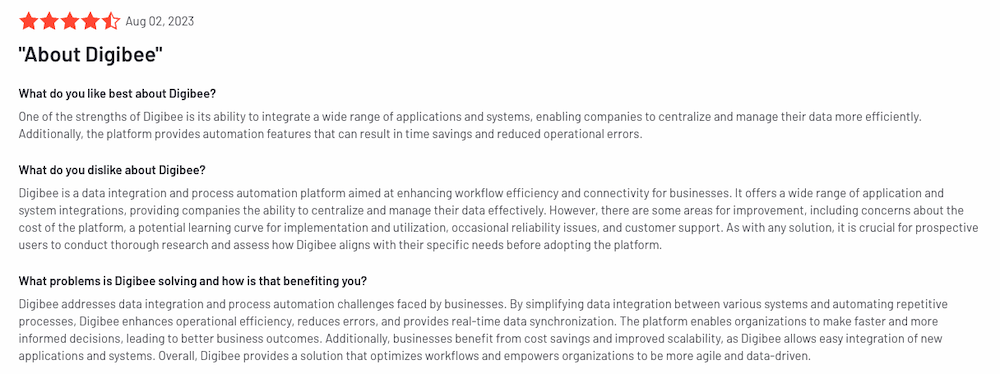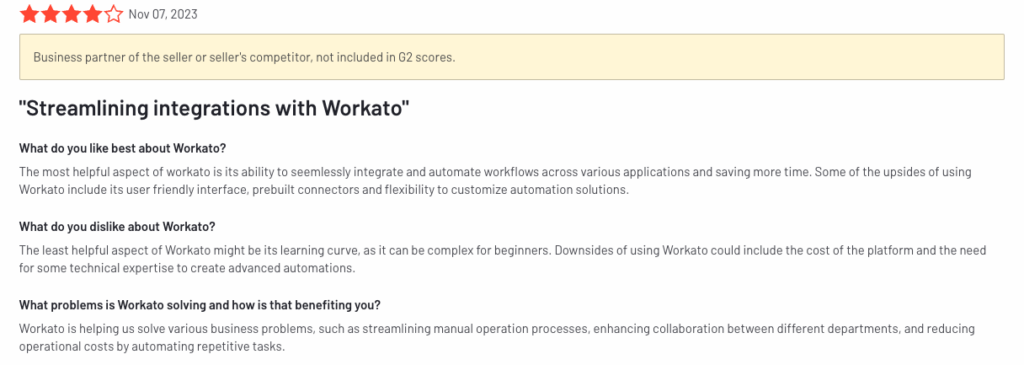
Vou começar este blog post com uma afirmação: alguns de nossos clientes mais satisfeitos aqui na Digibee são ex-usuários de plataformas iPaaS legadas. Você pode ter visto as notícias do nosso release usando IA para migrar integrações de outras plataformas para o Digibee.
Ou, talvez, algumas das histórias de nossos clientes que já usam a tecnologia iPaaS, recorrendo à Digibee para superar grandes desafios de integração. Em resumo, são muitas as provas de que a Digibee pode ajudar, mesmo se você já executa um iPaaS.
Mas mudar é difícil. Essa frase é clichê justamente porque é muito verdadeira. E a maioria dos profissionais de tecnologia tem péssimas memórias da frase “retirar e substituir” – em que uma substituição de tecnologia é tão difícil que a nova solução acaba por ser desanimadora em comparação com o trabalho árduo na transição.
Some a isso o fato das equipes de TI e de desenvolvimento estarem constantemente ocupadas, conciliando prioridades e lutando para cumprir prazos. As substituições tecnológicas precisam ser motivadas por uma razão justificável e quantificável, com um conjunto definido de resultados de negócios desejados. Se uma solução incorporada for “boa o suficiente”, seu plano de substituição poderá ser adiado cada vez mais. Os verdadeiros benefícios de uma alternativa melhor terão de esperar por uma crise.
De fato, a maioria dos clientes da Digibee que abandonam outro iPaaS o fazem por um motivo específico – seja o fim do suporte de uma solução local herdada, uma implantação de nova tecnologia que exige uma abordagem moderna de integração ou frustração com custos cada vez maiores com nenhum aumento nos benefícios.
Os usuários da Digibee aproveitam a escalabilidade e agilidade do nosso iPaaS não apenas como infraestrutura de back-end, mas como plataforma para inovação. Mas para chegar a esse patamar, você precisa começar com a decisão de mudar. Portanto, neste post, estamos compartilhando os 5 motivos para não substituir uma tecnologia estabelecida, conforme incluído em nosso e-book, ‘A sua estratégia de integração inspira ou impede?,
Meu objetivo é mostrar que nossa equipe e nossa tecnologia estão preparadas para ajudar não apenas a melhorar os recursos e a produção da sua equipe de desenvolvimento, mas também para atingir esses resultados mais rapidamente, com uma facilidade que você nem imagina ser possível.
>> Agende uma demonstração personalizada com nossa equipe de especialistas e veja como o iPaaS da Digibee trará eficiência ao seu negócio.
5 razões para NÃO substituir seu iPaaS
Mudar nunca é fácil. Quer você opte por eliminar e substituir um sistema existente ou por implementar uma solução de integração contemporânea para coexistir com um operador estabelecido, é provável que você encontre algumas destas objeções:
1. “Descartar e substituir uma tecnologia estabelecida é muito disruptivo. Os recursos deveriam ser investidos em outro lugar.”
Tal como acontece com qualquer proposta de investimento empresarial, um ROI detalhado vai trazer um posicionamento forte para combater essa objeção. Ao pesquisar fornecedores, peça que eles expliquem como seu modelo de implementação garantirá que as interrupções e o tempo de inatividade sejam minimizados. Enfatize esses recursos em sua análise de ROI, incluindo uma estratégia detalhada de desligamento.
2. “A solução de integração existente é complicada e interligada demais. Nunca vamos conseguir desvendar a codificação que foi criada ao longo dos anos.”
Este é um obstáculo comum, especialmente para empresas que construíram internamente parte ou toda a sua infraestrutura de integração. Levante isso em suas discussões com fornecedores em potencial e pergunte como cada um abordaria esse cenário. As respostas dos fornecedores devem ser construtivas, incluindo detalhes passo a passo de como apoiarão esta fase da transição.
3. “Mantemos a nossa decisão de investir na solução existente e não vamos recuar.”
As personalidades desempenham um papel importante na tomada de decisões. Quando você encontrar uma parte interessada que está batendo o pé, reserve um tempo para entender sua lógica quando selecionou o produto existente. Frequentemente, o business case apresentado (eficiência, economia de custos, inovação, etc.) se alinha ao seu projeto, potencialmente convertendo-o em um proponente. Se forem intransigentes na sua posição, proponha um modelo híbrido onde o antigo e o novo coexistam, com o novo iPaaS focado no trabalho que precisa de ser feito, como projetos de backlog de TI.
4. “Não precisamos adicionar ainda mais fornecedores, especialmente quando já temos um provedor de integração.”
Semelhante à primeira objeção, compartilhe um plano de ROI detalhado que reflita as economias de tempo, recursos e dinheiro que serão alcançadas com um novo iPaaS, seja trabalhando em conjunto com o sistema antigo ou como um substituto. É difícil contrariar uma proposta que proporcione benefícios mensuráveis para o negócio.
5. “Os orçamentos são apertados e será difícil justificar os gastos quando já temos uma solução.”
Novamente, um modelo de ROI claro vai mostrar como as vantagens superam as desvantagens em se tratando de gastos. O iPaaS moderno (ao contrário da integração legada) é extremamente econômico, fornecendo um modelo de preços simples que oferece todos os recursos, como implementação e serviços de suporte. Para muitas empresas, a mudança de on-premises para a nuvem converte o investimento de CapEx em OpEx, proporcionando vantagens financeiras adicionais.
Digibee: 2 caminhos para modernizar sua estratégia de integração
Todas as 5 razões acima para não mudar são válidas. No entanto, como sugerem as nossas descrições em cada declaração, cada uma delas pode ser abordada no processo de verificação de um potencial substituto.
Quando esse substituto é o Digibee, as equipes de desenvolvimento e de TI são atraídas, em geral, por alguns aspectos específicos de nosso iPaaS que os provedores de integração monolíticos legados não podem fornecer. Um é o empoderamento de todos os desenvolvedores – e não apenas especialistas em integração – para criar, monitorar e adaptar facilmente integrações. Outro aspecto é a natureza combinável de nossa plataforma. A arquitetura serverless, nascida na nuvem, é construída em microsserviços, de modo que o gerenciamento de mudanças é fácil e repetível, sem precisar do grau usual de personalização de código ao qual as empresas estão acostumadas.
Às vezes a substituição no atacado de um iPaaS é justificável e em muitas situações inclusive necessária. A velocidade com que a Digibee pode capacitar essa mudança para atender prazos impostos pelo fim do suporte ou outras necessidades urgentes estão bem consolidadas no mercado.
A outra opção é usar o Digibee em conjunto com o iPaaS estabelecido para queimar o backlog de integrações que a tecnologia legada e os especialistas em integração simplesmente não conseguem. Isso fornece um caminho alternativo para utilizar o Digibee para capacitar seus desenvolvedores e modernizar sua estratégia de integração em fases.
Próximos passos com a Digibee
Sempre gostamos de ouvir dos líderes de arquitetura e desenvolvimento sobre como estão abordando atualmente a estratégia de integração e como veem a evolução dessa estratégia. Se este blog post tocou em pontos problemáticos que você sabe que sua equipe de desenvolvimento está enfrentando, mas não encontrou uma maneira de resolver, converse conosco!
Se você estiver interessado em aprender mais sobre o iPaaS nascido na nuvem da Digibee para uma abordagem de integração mais simples, rápida e moderna, então entre em contato para uma demonstração ou, se preferir, visite nossa página de produto.































